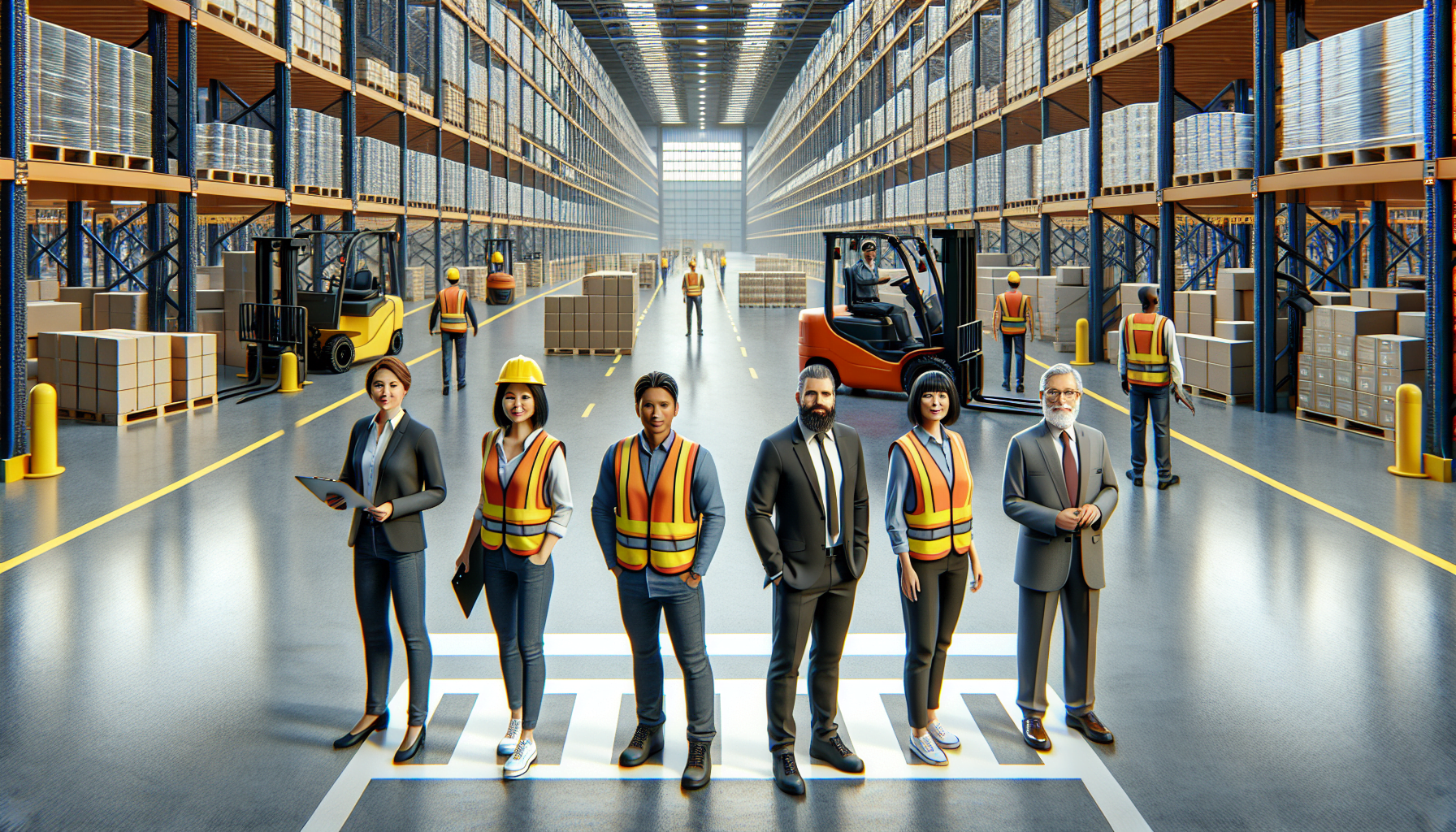Creating a Culture of Safety for Pedestrians in Your Warehouse
Ensuring the Safety of Pedestrians in a Warehouse Environment
Warehouses are busy, bustling places with forklifts and other equipment moving around to keep operations running smoothly. With all the activity, it’s crucial to prioritize the safety of pedestrians in your warehouse. By creating a culture of safety, you can significantly reduce the risk of accidents and injuries. In this article, we will explore some strategies to help you create a safe environment for pedestrians in your warehouse.
1. Employee Training and Education
The foundation of a safe warehouse starts with properly trained and educated employees. Provide comprehensive training programs to all warehouse personnel, including both pedestrians and forklift operators. This training should cover safety protocols, equipment operation, and awareness of potential hazards.
Encourage regular refresher courses and updates on safety practices to ensure that all employees are up to date with the latest procedures. By investing in their training and education, you not only reduce the risk of accidents but also foster a sense of responsibility among employees to prioritize safety.
2. Implement Clear Signage and Visual Cues
Visual communication is key to creating a safe warehouse environment. Use clear and prominent signage to indicate pedestrian walkways, designated crossing areas, and hazardous zones. Make sure that the signs are large, easily visible, and placed strategically throughout the facility.
In addition to signs, use floor markings and color-coded areas to identify different zones. For example, you can use bright yellow lines to demarcate pedestrian walkways and separate them from forklift operating areas. This helps to establish clear boundaries and reduces the risk of collisions between pedestrians and equipment.
3. Encourage Proper Personal Protective Equipment (PPE) Usage
Pedestrians should wear the appropriate personal protective equipment (PPE) when inside the warehouse. This may include high-visibility vests, safety helmets, safety shoes, and any other necessary gear based on the specific hazards present in your facility.
Regularly remind your employees about the importance of wearing their PPE and provide easy access to the required equipment. Conduct regular checks to ensure that all pedestrians are adhering to the safety guidelines and wearing the necessary gear.
4. Implement Forklift Pedestrian Detection Systems
To further enhance pedestrian safety in your warehouse, consider implementing forklift pedestrian detection systems. These systems use advanced technologies such as sensors and cameras to detect the presence of pedestrians near forklifts and alert the operators.
By installing a forklift pedestrian detection system, you can greatly reduce the risk of accidents caused by blind spots or lack of visibility. This technology serves as an extra layer of protection and helps create a safer environment for both pedestrians and forklift operators. Click here to learn more about HCO Innovations’ forklift pedestrian detection system.
5. Regular Inspections and Maintenance
In order to maintain a safe warehouse environment, it’s essential to conduct regular inspections and maintenance of all equipment. This includes forklifts, pallet jacks, and any other machinery used in the warehouse.
Establish a maintenance schedule and ensure that all equipment is regularly checked for any signs of wear or malfunction. Promptly address any issues to prevent accidents or breakdowns that could potentially harm pedestrians.
6. Foster a Culture of Communication and Accountability
Encourage open communication among all warehouse personnel. Create channels for employees to report any safety issues, near misses, or potential hazards they observe while on the job. Regularly review and address these reports to continually improve safety protocols.
Additionally, foster a culture of accountability by enforcing consequences for unsafe behaviors. Reward employees who consistently prioritize safety and make it clear that safety is a top priority for the company.
Conclusion
To create a culture of safety for pedestrians in your warehouse, it’s important to invest in employee training, implement clear signage and visual cues, encourage proper PPE usage, consider forklift pedestrian detection systems, conduct regular inspections and maintenance, and foster a culture of communication and accountability. By following these strategies, you can significantly reduce the risk of accidents and injuries, creating a safe and productive warehouse environment for all.

